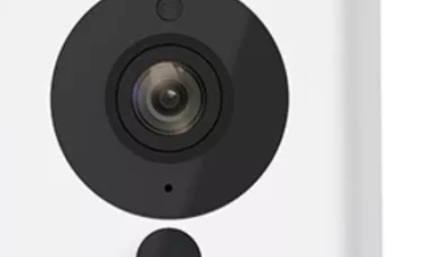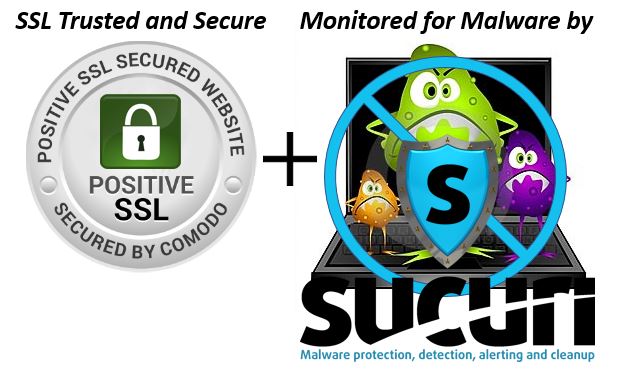Every day there are certain “tech” sites I visit for news and information to help me keep up with what’s going on in the Technology World.
To give you an easy way to see the latest happenings, here are the top 5 articles (for today) from four of my favorite sites.
Scroll down to see news from TechSpot, CNet, PC World, and Make-Use-Of.
Clicking the article title will open a new browser tab and take you to the full article.
News from TechSpot
- YouTube star Marques Brownlee's scathing Humane Ai Pin review leads to argument over ethics and influenceon April 16, 2024 at 11:55 am
iPhone alumni Imran Chaudhri and Bethany Bongiorno made some big promises about the Ai Pin, a screenless, square device that can be attached to clothing. It features a camera, microphone, a touch pad, and a laser projector that displays the GUI on a user's hand. The Ai Pin can also...Read Entire Article
- New Affordable AMD B650 Motherboard Roundupon April 16, 2024 at 11:09 am
Motherboard makers release revised models of existing boards all the time. But what is unusual here is that all these new additions are entry-level, and released rather quietly. Let's find out why.Read Entire Article
- Ikea announces Brännboll: a new gaming furniture line blending style and functionon April 16, 2024 at 10:15 am
Launched at Milan Design Week 2024, the Brännboll collection aims to reflect "casual gaming today," said Philip Dilé, product design developer at Ikea.Read Entire Article
- PlayStation 5 Pro will be bigger, faster, and better using the same CPUon April 16, 2024 at 2:20 am
Last month, internal Sony documents revealed that the upcoming PlayStation 5 Pro sports improved ray tracing performance and a new upscaling technology. More information surfaced later on, providing a clearer picture of the console's specs. While the PS5's GPU has undergone a full-architecture hardware refresh, PlayStation 5's main computing chip...Read Entire Article
- Apple cans knockoff Game Boy app as emulators suffer first App Store casualtyon April 15, 2024 at 10:28 pm
Frankly, another unauthorized software related to Nintendo getting taken down is par for the course and not all that surprising. However, it is notable that iGBA's takedown originated from something other than Nintendo's DMCA legal hounds. Apple either removed it for its own reasons or the developer of the GBA4iOS...Read Entire Article
News from CNet
- Walmart's $45 Million Payout: Customers From Past 6 Years Can File a Claim - CNETby Mary-Elisabeth Combs on April 16, 2024 at 11:15 am
Learn what you need to file a claim for up to $500 back from a class action suit against Walmart.
- Futuristic Apple Wishlist: Our Experts' Hopes for iOS 18 at WWDC 2024 - CNETby Patrick Holland on April 16, 2024 at 11:00 am
Hopefully, Apple won't go another year without adding one of these features to our iPhones.
- Xbox Game Pass Ultimate: Play Shadow of the Tomb Raider and More Now - CNETby Zachary McAuliffe on April 16, 2024 at 11:00 am
If you have a Game Pass Ultimate subscription you can access these titles and others now.
- Mortgage Rates Go Up for Homeseekers: Mortgage Interest Rates for April 16, 2024 - CNETby Katherine Watt on April 16, 2024 at 10:11 am
Some notable mortgage rates inched up. Here's what experts say is next for the housing market this year.
- Homeowners Face Higher Refi Rates: Today's Refinance Rates, April 16, 2024 - CNETby Katherine Watt on April 16, 2024 at 10:07 am
Multiple key refinance rates increased this week, but rates should start trending down in the coming months.
News from PC World
- Use your TV as a computer monitor: Everything you need to knowon April 16, 2024 at 12:00 pm
You’re not the first person who’s wondered what it would be like to have a giant desktop monitor. Think of all the multi-tasking and immersive gaming you could manage if you had a 50- or 60-inch monitor instead of a standard 24-inch monitor! But you’ve probably noticed that as monitors get bigger, they also tend to get prohibitively expensive. Can you use a TV as a monitor? You’ve probably already got a big screen in your house, though—a TV. At the end of the day, isn’t an HDTV just a giant, living-room-oriented computer monitor? Not exactly. While you can use a TV as a computer monitor in most cases, that doesn’t mean it’s the best option. In fact, it’s likely less attractive, convenient, and usable than you think (not to mention, probably not that cheap). There’s a reason dirt-cheap 32-inch HDTVs aren’t flying off the shelves to be used as budget-friendly jumbo screens. You definitely can use an HDTV as your PC’s display, though, and your television can also work in a pinch if you suddenly need a second screen. Here’s everything you need to know about how to set up a TV as a computer monitor—and why you might not want to. How to use a TV as a monitor You can use a TV as a monitor, but it could take a little finagling. You may need a special cable, depending on your PC’s outputs and your HDTV’s inputs, and you’ll need to check a couple of settings, but you shouldn’t have too much trouble hooking most modern PCs up to most modern HDTVs. Modern HDTVs have HDMI outputs. Some older HDTVs have DVI inputs, and some even have VGA inputs specifically designated for “PC use.” If your graphics card has an HDMI output, you’re good to go: Just use an HDMI cable to connect your PC to your HDMI. All modern graphics cards (like this Sapphire Pulse Radeon RX 6600 XT) include at least one HDMI port (second from left, between several DisplayPorts). All modern graphics cards (like this Sapphire Pulse Radeon RX 6600 XT) include at least one HDMI port (second from left, between several DisplayPorts). Brad Chacos/IDG All modern graphics cards (like this Sapphire Pulse Radeon RX 6600 XT) include at least one HDMI port (second from left, between several DisplayPorts). Brad Chacos/IDG Brad Chacos/IDG If you’re using an older graphics card or motherboard that only has a DVI output, you can snag a cheap DVI-to-HDMI cable and plug it into your HDTV’s HDMI output. Amazon sells a six ft. AmazonBasics version for just $9. Although some older HDTVs and some older computers only have VGA inputs/outputs, they aren’t not an ideal choice. VGA’s an analog signal that will give you a far fuzzier, lower-resolution image than you’ll get with an HDMI or DVI cord. If you want to use your HDTV as a second or third monitor, you may need to use a different port, such as your graphics card’s DisplayPort output. In this case, you’ll need to use a different cable (DisplayPort-to-HDMI). The main advantage to using the DisplayPort output instead of DVI or VGA is that HDMI and DisplayPort carry both video and audio signals. A DVI-to-HDMI cable can transmit both video and audio if your graphics card supports HDMI audio via DVI—unlikely if it doesn’t have any HDMI ports—while VGA only transmits video. If you use DVI or VGA, you will most likely need to connect your PC’s audio up to the HDTV separately, or use external speakers or a headset. Bottom line? Try to stick to HDMI if or DisplayPort-to-HDMI connections if it’s possible. It’s the easiest solution. Getting your PC ready You’ll also need to determine whether your graphics card (or your PC’s integrated graphics) is capable of outputting at the resolution of your HDTV. To do this, you will first need to find the resolution of your HDTV by consulting the manufacturer’s manual. Some HDTVs have non-standard resolutions; it’s not a given that your HDTV will be supported. Most stick to standard 720p, 1080p, or 4K resolutions however. Next, find the maximum resolution your graphics card/integrated graphics supports. Open the Windows Start menu and head to Settings > System > Display > Advanced display settings > Display adapter properties for Display 1. In the window that pops up, click List All Modes. Find the resolution that matches your HDTV’s resolution and select it. If you’re using the HDTV to supplement a standard computer screen, simply follow our guide on how to set up two monitors to tell Windows how to manage both displays. Will it look good? Maybe. It depends on how you’re using your HDTV. HDTV features to keep in mind If you’re turning your HDTV into a PC-backed multimedia powerhouse, and you plan on using it primarily as a television and streaming hub—e.g. a screen you’ll continue to view from several feet away—it will probably look fine. But if you’re trying to stick a 60-inch HDTV on a desk, you’re more likely to end up with headaches and eye strain. There are a few different factors to keep in mind if you want to use an HDTV as a computer monitor. Pixel density Pixel density, or the number of pixels packed into one square inch of screen (measured in pixels per inch or ppi), is the most important factor to consider. A 15.6-inch laptop screen with a 1920 x 1080 resolution has a pixel density of 141.21ppi, while a 32-inch HDTV screen with the same resolution has a significantly lower pixel density of 68.84ppi. The lower the pixel density, the less clear and detailed the image becomes. But the importance of pixel density decreases with viewing distance. The further you sit from a screen, the lower the pixel density need to be for you to have a comfortable viewing experience. You won’t have any problems looking at a 15.6-inch/141.21ppi screen from two feet away, but you will find it much harder to view a 32-inch/68.84ppi screen from the same distance. This is why a “Retina” screen on the iPhone has a pixel density of 326ppi, but a “Retina” screen on the Macbook Pro has a pixel density of just 226ppi. 6 Series TCL TV. 6 Series TCL TV. 6 Series TCL TV. A normal user typically sits between two and three feet away from a desktop monitor. To comfortably view a monitor at this distance, you should aim for 80ppi or higher. This means that for 1920×1080 (1080p) resolution, your screen should be no larger than 27.5 inches diagonally, and for 4K sets, you’ll want to max out at 55 inches, like the $700 TCL 6-series 4K UHD quantum dot TV shown above. Important: “4K” is not a market standard. A 4K HDTV can mean 4x720p (3840×2160 resolution) or 4x1080p (4096×2160 resolution). Most models use 3840×2160, but you should check the exact specs of your model to determine pixel density. Input lag Input lag is the delay between movement you make on your input device (in this case, a mouse and keyboard) and what displays on your screen. While most computer monitors prioritize minimal lag times, HDTVs generally do not—they prioritize (laggy) video processing instead. These extra milliseconds may not seem like they matter, but they will make a massive difference if you’re trying to do something like competitive online gaming. DisplayLag maintains a good database of input lag times, sortable by display type. An input lag of less than 30 milliseconds is considered good for an HDTV if you’re using it as an HDTV. For a computer monitor, you’ll want to aim for less than 20 milliseconds, and the lower you can go, the better. Response time Often confused with input lag, response time describes how long it takes for a display’s pixels to switch colors between scenes. HDTVs and computer monitors can have very different response times. HDTVs tend to prioritize richer colors, higher contrast, and wider viewing angles—all of which lend to a longer response time. Computer monitors tend to drop some of the image processing and viewing angles for faster response times. If you use a display with a slower response time, you may see “ghosting” in fast-paced video and gaming sequences. Also pay attention to the type and number of ports. This is only one of two port areas on an LG TV. Many TVs offer ports nearer the side as well for the sake of easy access. Also pay attention to the type and number of ports. This is only one of two port areas on an LG TV. Many TVs offer ports nearer the side as well for the sake of easy access. Also pay attention to the type and number of ports. This is only one of two port areas on an LG TV. Many TVs offer ports nearer the side as well for the sake of easy access. Some HDTVs have a “game mode” setting, which cuts some of the image processing to improve both input lag and response time. If you plan to play PC games on your TV, definitely dig around in your HDTV’s options to see if it has this feature. Refresh rate Another factor that may affect performance is a display’s refresh rate. Refresh rate is the number of times a display “refreshes,” or re-draws, its image each second. Most modern displays have a refresh rate of 60Hz, which means they refresh their image 60 times per second. But you’ve probably also seen higher-end gaming monitors and HDTVs with higher advertised refresh rates—120Hz, 144Hz, or even 240Hz. This can be misleading, however, because a computer monitor with a 120Hz refresh rate may not be the same as an HDTV with a 120Hz refresh rate. The reason for this is because the content people watch on a television is produced at either 24fps, 30fps, or 60fps. The content people view on a computer monitor can be very different—many games can output frame rates higher than 60fps if you have a powerful enough graphics card. An HDTV with a high advertised refresh rate may use post-processing technology to achieve that rate, such as by creating additional frames to upscale content, or by adding black frames between each frame to prevent image blur. The good news is that this probably won’t make a difference if you’re not playing PC games at very fast frame rates. But if you have a PC designed for the best possible gaming experience, hooking up an HDTV instead of a computer monitor likely means that you’re not getting the most out of your machine. Is it worth it? There’s no harm trying to connect your computer to a TV you already own to see if it works for you. Go for it! Our advice varies if you’re shopping though. If you’re looking to get the best bang for your buck, an HDTV isn’t necessarily going to save you money over a monitor. In fact, if you’re purchasing a new display, I recommend sticking with the tried-and-true computer monitor. For one thing, smaller, cheaper HDTVs are typically 720p resolution, not 1080p, while similarly priced monitors will almost always be 1080p. So if you’re looking for something under 27 inches, an HDTV will probably be more expensive and lower-resolution. See our roundup of the best monitors for recommendations. Even our best budget pick, the 1080p Acer K242HYL, supports AMD’s FreeSync adaptive sync technology, which can help your games look buttery smooth. You won’t find that in a cheap TV. mentioned in this article Acer K242HYL Read our review Price When Reviewed: $149 Best Prices Today: $149.99 at Acer If you’re looking for something larger than 27 inches, remember that pixel density decreases significantly with every few inches you gain, and there’s a reason HDTV-makers suggest sitting several feet away from their displays. If you need a display that will multitask as an up-close work/email display as well as a movie/entertainment display, you’ll want something with a high enough pixel density that text won’t be a pain to read—and even with a high pixel density, a large display may still cause eye and neck strain if you sit too close to it. An HDTV as a secondary monitor is perfect for streaming Twitch, watching Netflix, or keeping an eye on Twitter in real time. An HDTV as a secondary monitor is perfect for streaming Twitch, watching Netflix, or keeping an eye on Twitter in real time. An HDTV as a secondary monitor is perfect for streaming Twitch, watching Netflix, or keeping an eye on Twitter in real time. There is an ideal situation in which the HDTV-as-monitor shines, though. If you want to add an extra display to a single- or multi-display setup for entertainment—say, so you can watch Netflix or Twitter while you write articles, or so you can play Skyrim on a 60-inch screen—then an HDTV can be a very capable (and cool!) monitor replacement. Bonus points if you happen to have an extra HDTV lying around, or if you can pick one up for dirt cheap. Consumer Electronics, Desktop PCs, HDTVs, Monitors
- Windows PCs are now getting the free upgrade to Windows 11on April 16, 2024 at 10:30 am
If you have a Windows 10 computer, Microsoft will offer you a free upgrade to Windows 11. Provided the hardware of the Windows 10 computer is compatible, otherwise Windows 11 will refuse the installation. Microsoft has now released a large number of Windows 10 PCs that were previously not allowed to install the upgrade for the Windows 11 upgrade. Microsoft had been denying Windows 10 computers with an 11th-generation Intel Core Processor and Intel SST driver version 10.29.0.5152 or 10.30.0.5152 (the SST stands for “Smart Sound Technology”) the upgrade to Windows 11 since November 2021. With this hardware driver combination, recurring blue screens of death could occur after installing Windows 11. Get windows 11 Windows 11 Pro Price When Reviewed: 199.99 Best Prices Today: $59 at PCWorld Store – Win 11 Pro Upgrade Only | $79.99 at PCWorld Software Store Resourceful Windows users could only solve this problem by updating the Intel SST drivers themselves. Those who did this independently were then able to switch to Windows 11 free of charge. However, Microsoft refused to upgrade all other PC owners with the described combination of CPU and driver. As of today, however, this problem has generally been solved. From now on, all affected Windows 10 users with the chip and driver combination described above can download and install the latest Intel SST drivers via the Windows update function. As soon as Windows 10 has installed the driver update, you can upgrade to Windows 11. However, Microsoft emphasizes that it could take another two days before Windows 10 offers the upgrade to Windows 11. You can find the official release of the Windows 10 PCs previously blocked for the upgrade on this status page from Microsoft. It is not known why Microsoft took until April 12, 2024 to finally make the drivers, which have long since been adapted by Intel, available via Windows Update and lift the upgrade block. However, if Windows 10 does not offer the driver update after all, PC owners should contact their PC manufacturer for the driver update. Windows 10 is clearly in the lead It remains to be seen whether this will significantly increase the market share of Windows 11. According to Statcounter, Windows 10 is still by far the most popular desktop operating system (March 2024: 69.05 percent market share among all Windows systems). Windows 10 even managed to gain market share slightly in March 2024, whereas Windows 11 lost market share slightly (March 2024: 26.68 percent market share among all Windows systems). According to Statcounter, all Windows systems together had a market share of 72.47 percent in March 2024. MacOS is well behind with 14.68 percent. This article originally appeared on PC Welt and was translated from German to English. Windows
- Save more than $100 on a TCL Tab 10 5G tableton April 16, 2024 at 10:00 am
A tablet is a great way to stay productive when you’re traveling or commuting. It doesn’t have to be all that expensive to add one to your everyday carry, either. Right now, we’re offering the TCL Tab 10 5G Android Tablet for more than half off at just $119.99. This TCL tablet is powered by a MediaTek Kompanio 800T Octa-Core 5G chipset and has 4GB of RAM, supporting smooth multitasking and giving you access to the 5G network. It runs on Android 12, efficiently running apps and giving you an intuitive interface to work seamlessly on the 10.1” FHD NXTVISION display. Plus, with a powerful 8,000mAh battery with built-in Battery Saver mode, you can easily stay on all through your workday. Stay connected and work efficiently from anywhere. For a limited time, you can get the TCL Tab 10 5G Android Tablet for 51% off $249 at just $119.99. TCL Tab 10 5G Android Tablet – $119.99 See Deal StackSocial prices subject to change. Accessories
- How to digitize VHS tapes the cheap wayon April 16, 2024 at 10:00 am
Good news, everyone: My bar mitzvah videos from the mid-1990s are now digitized for the ages. While I have no intention of actually watching them — oy, the embarrassment — I recently received the original tapes from my parents and felt like they were worth preserving in a more enduring form than VHS. I was able to do it for cheap thanks to my USB capture card, which I originally bought to take screenshots of streaming devices for my TechHive column on cord cutting but which continues to have all kinds of other neat uses. Below, I’ll walk through how to digitize your own VHS tapes or camcorder footage using the same methods, plus a few extra tricks that might make a USB capture card worth considering. This column first appeared in Advisorator, Jared’s weekly tech advice newsletter. Sign up to get free tech tips every Tuesday. The hardware The USB capture card is a thumb-sized device with an HDMI input on one side and a USB plug on the other. Connect the capture card to your computer’s USB port, then hook up any device with HDMI output, and you can record that device’s video using a free program called OBS (more on that shortly). Jared Newman / Foundry Jared Newman / Foundry Jared Newman / Foundry Amazon is filled with capture cards from no-name brands for under $20. While the particular one I purchased is no longer available, this one looks pretty similar, able to capture video at 1080p up to 30 frames per second, or 720p at 60 frames per second. It uses a USB-C connector, but also has a USB-A adapter. (Alternatively, this one works the other way around.) You’ll also need a VHS player. If you don’t have one collecting dust in a closet — or don’t know anyone else who does — consider looking for one at a thrift store such as Goodwill, searching on Facebook Marketplace, or buying on eBay. Of course, most VHS players don’t have HDMI output — including the one I pilfered from my father-in-law’s house for this project — so you also need a composite-to-HDMI adapter. I grabbed one on Amazon for $10. The setup, in the end, looks like this: VHS Player → Composite video out → Composite adapter → HDMI out → USB Capture Card → PC. I’m using a Windows desktop, but this setup should work just as well with a Mac or Linux machine, or a Chromebook capable of running Linux apps. The software Jared Newman / Foundry Jared Newman / Foundry Jared Newman / Foundry The other half of the equation is a free program called Open Broadcaster Software Studio, or OBS. It’s often used to stream video game console footage on sites like Twitch and YouTube, but you can also use it to record from pretty much any HDMI video source. Once you’ve installed OBS and hooked up the USB capture card, you can record video with a handful of steps: Under “Sources,” hit +, then select “Video Capture Device.” Give the source a name, like “Capture Card,” and hit “OK.” Select “USB 3.0 capture” — that’s your capture card — under the Device heading. Jared Newman / Foundry Jared Newman / Foundry Jared Newman / Foundry To preserve the VHS aspect ratio, change “Resolution/FPS Type” to “Custom” and set the Resolution to 640×480, then hit “OK.” Under “Audio Mixer,” make sure the “Desktop Audio” and “Mic/Aux” sliders are set to zero or muted. If you want to preview the tape player audio before recording, hit ⋮ under “Capture Card” in the Audio Mixer section, select “Advanced Audio Properties,” and set Audio Monitoring to “Monitoring and Output” for the Capture Card. At this point, OBS should display your video when you hit play on the VHS player, but only in a small corner of the preview window. To fix this, drag the corner of the video so it fills the screen, then move the video into the center of the preview window. Jared Newman / Foundry Jared Newman / Foundry Jared Newman / Foundry Now, you can hit play on your VHS player, and hit “Start Recording” in OBS. Wait until the video has finished and hit “Stop Recording,” and OBS will produce a video file in the MKV format, appearing in your computer’s video folder by default. You can then trim it down with any video editing software (I used the free Solveig AV1 Trimmer for Windows) or use a program like DVD Styler to burn the video to DVD. More OBS and capture card tricks A capture card and OBS aren’t the only ways to digitize a VHS. You can also purchase products like Vidbox or Roxio VHS to DVD for this specific purpose, or pay a professional to convert tapes in bulk. But if you already have a VHS player, buying the necessary adapters will only cost you about $30, roughly half the price of those other solutions. And in the long-run, the cobbled-together solution is a worthier investment. Once you get the hang of OBS, it becomes a way to record pretty much anything. Some examples: Record from streaming devices: Plug a Roku or Fire TV Stick into your capture card, and you can record video from streaming sources such as Netflix or Disney+. You can also right-click the preview window and select “Screenshot (Source)” to capture a still image. This is how I illustrate most of my streaming device reviews over at TechHive. Record your desktop: Hit the + button under “Sources” in OBS and select Display Capture (to record your entire screen) or Window Capture (to record just one application). Note that this won’t work with DRM video sources such as Netflix. Record yourself: Add your webcam as a source from the Video Capture Device menu to include video of yourself. You can then overlay it onto other video sources to record yourself providing color commentary. Note that you can use OBS’s “Scenes” menu to toggle between different setups, each with its own layout and capture device. That way, you can have a scene for digitizing VHS tapes, another for recording from streaming players, and another that overlays your webcam, all without having to set up everything from scratch each time. OBS can take some time to learn — I’m still discovering many of its intricacies myself — but there’s a reason Twitch and YouTube streamers swear by it: With a little practice, the potential use cases are practically endless. This column first appeared in Advisorator, Jared’s weekly tech advice newsletter. Sign up to get free tech tips every Tuesday. Backup Software
- Get Microsoft 365 for the whole family for $10 off with codeon April 16, 2024 at 8:00 am
Staying organized yourself is hard enough, keeping the whole family on the same page can be a supreme challenge. Get the whole family humming like a finely oiled machine with a Microsoft 365 Family subscription. With this deal, you’ll get six Microsoft 365 licenses, which include Microsoft Office, OneDrive Personal Vaults, and more. Rated 4.7/5 stars on GetApp, Microsoft 365 helps everyone in the family can become more productive and better organized. Everyone will have Word, Excel, PowerPoint, Outlook, Teams, and OneNote, so whether you’re a real-life professional or a student, you’ll have the tools you need to succeed. Plus, the deal includes 6TB of OneDrive storage space, with a personal accessible vault for each person. Get the whole family working smarter with a Microsoft 365 Family subscription. From 4/15 through 11:59 pm PT on 4/21, you can get a 15-month subscription for just $89.59 (reg. $99) when you use promo code ENJOY20. Microsoft 365 Family: 15-Month Subscription [6TB OneDrive Cloud Storage/6 People, For PC/Mac] – $89.59 See Deal StackSocial prices subject to change. Accessories
News from Make-Use-Of
- What Is Xbox Cloud Gaming and How Does It Work?by Simon Batt on April 16, 2024 at 12:00 pm
Did you know you can play Xbox games on your mobile phone? Here's how it works.
- Wordle #1032: Today's Wordle Answer and Clues (Tuesday, April 16, 2024)by Dave Parrack on April 16, 2024 at 4:01 am
Struggling to beat today's Wordle? We have both the solution and some clues to help you out.
- Connections #310: Today's Answer and Hints (Tuesday, April 16, 2024)by Dave Parrack on April 16, 2024 at 4:01 am
Struggling to solve today's Connections? We have clues for each category, plus the solution if you're stuck.
- 7 Mistakes You’re Probably Making in Canvaby Danny Maiorca on April 15, 2024 at 9:00 pm
Boost your designs and streamline your workflow by avoiding these common mistakes in Canva.
- Game Ready or Studio: Which Nvidia Driver Is Right for You?by Kris Wouk on April 15, 2024 at 5:00 pm
Not sure whether to choose the Nvidia Game Ready Driver or the Studio Driver for your card? The good news is the decision isn't permanent.








